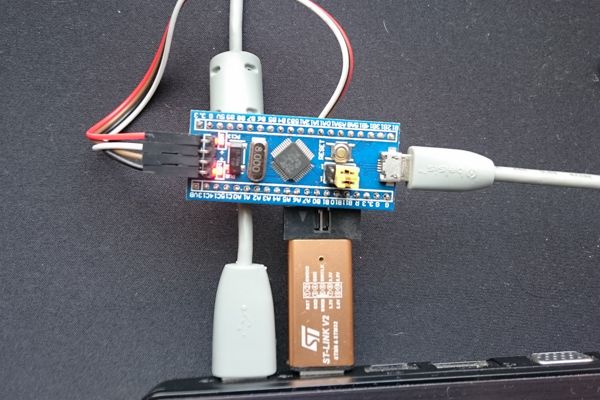Demo of the usage USBDevice library with Blue Pill STM32F103C8T6 board.
STM32F103C8T6 USBSerial Demo
This project contains demo of the USB serial usage for a cheap developer board Blue Pill with STM32F103C8T6 mcu.

The USB serial port provides a good communication channel between PC and microcontroller. Especially it can be useful for a debug purposes.
Notes
- by the specifications this board has only 64KB of the flash, but actually it can have 128KB, that will be useful for a debug builds as it requires about 100KB of the flash for this demo.
- the board can have some problems with an USB because it has wrong value of the pull-up resistor
- for steady reading of data from a serial port, the project contains python script serial_reader.py (it requires PySerial and six python libraries), that is steady to the board reloading
- the project depends on the fork of the USBDevice library. This fork contains some fixes and support of the BLUE_PILL_STM32F103C8 target.
- the mbed-os now contains correct code for a clock initialization of the BLUE_PILL_STM32F103C8 target, so you don't need to adjust the board clocks separately
Diff: main.cpp
- Revision:
- 0:24604e97c40c
--- /dev/null Thu Jan 01 00:00:00 1970 +0000
+++ b/main.cpp Fri Aug 04 18:41:22 2017 +0300
@@ -0,0 +1,27 @@
+/**
+ * The example of the program for STM32F103C8T6 (Blue Pill board).
+ *
+ * This program demonstrate led and usb serial port usage.
+ *
+ * @author Kochin Konstantin
+ */
+#include "USBSerial.h"
+#include "mbed.h"
+#include "stdio.h"
+
+DigitalOut myled(LED1);
+USBSerial usbSerial(0x1f00, 0x2012, 0x0001, false);
+
+int main()
+{
+ uint32_t counter = 0;
+
+ while (true) {
+ usbSerial.printf("I am a USB serial port. Tick %d.\n", counter);
+ counter++;
+
+ myled = !myled;
+
+ wait_ms(1000);
+ }
+}
 Konstantin Kochin
Konstantin Kochin